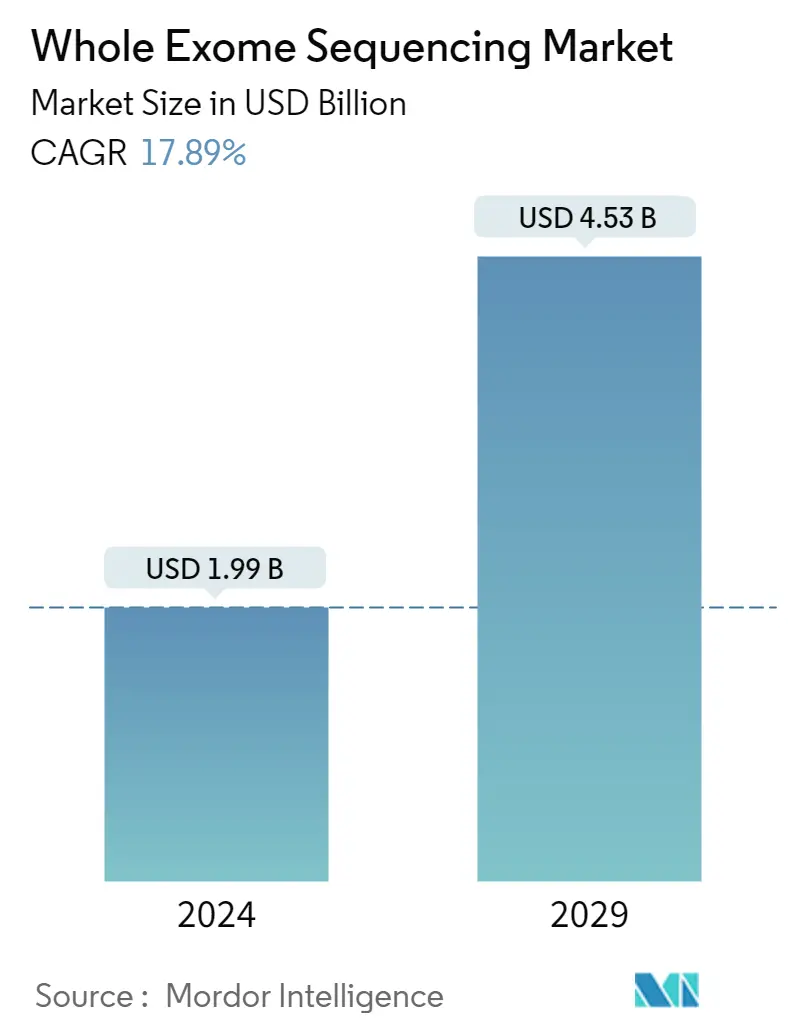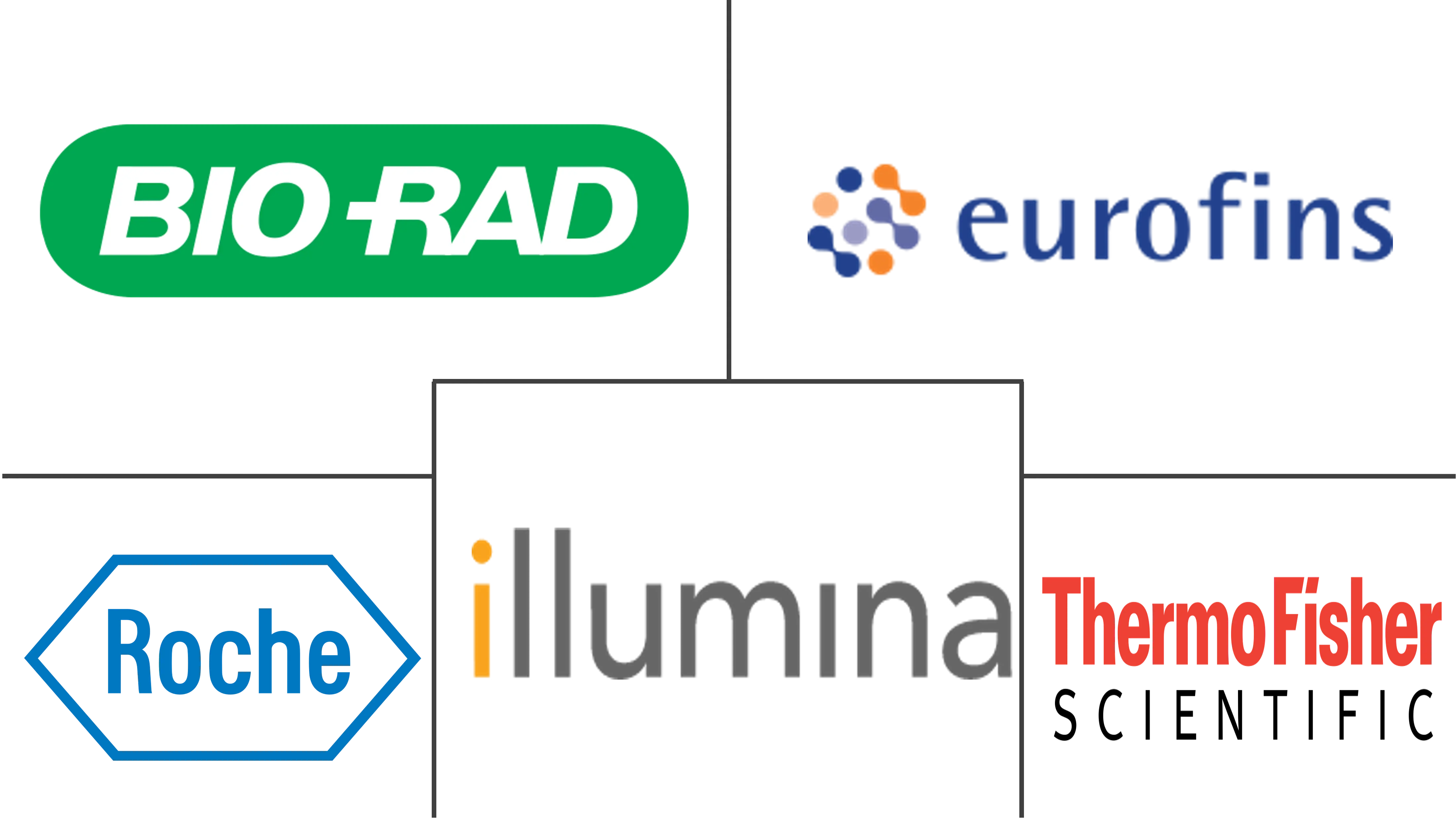Market Size of Whole Exome Sequencing Industry

| Study Period | 2021 - 2029 |
| Market Size (2024) | USD 1.99 Billion |
| Market Size (2029) | USD 4.53 Billion |
| CAGR (2024 - 2029) | 17.89 % |
| Fastest Growing Market | Asia-Pacific |
| Largest Market | North America |
Major Players
*Disclaimer: Major Players sorted in no particular order |
Need a report that reflects how COVID-19 has impacted this market and its growth?
Whole Exome Sequencing Market Analysis
The Whole Exome Sequencing Market size is estimated at USD 1.99 billion in 2024, and is expected to reach USD 4.53 billion by 2029, growing at a CAGR of 17.89% during the forecast period (2024-2029).
The outbreak of the COVID-19 pandemic pushed the pharmaceutical industry into action, with a race to develop therapeutic and preventive interventions. The onset of the SARS-CoV-2 pandemic set many pharmaceutical companies to quickly add clinical sequencing to expand safety testing that helped fight against the COVID-19 pandemic. COVID-19 had a significant impact on the whole exome sequencing market. For instance, as per the study published in PLOS ONE in January 2022, it was concluded that COVID-19 syndrome caused significant alterations in the blood transcriptome, which were assessed using RNAseq and verified using digital droplet PCR (ddPCR) on specific targets. Such studies augment the use of whole exome sequencing in analyzing the progression of COVID-19, thereby boosting the market's growth over the coming years. Hence, owing to the increasing RNA and DNA sequencing-based research & development activities in developing diagnostic tools or effective therapeutics for COVID-19, the market is likely to continue its significant growth rate during the forecast period.
The key factors driving the global whole exome sequencing market are increasing applications in clinical diagnosis and the growing demand for diagnosing rare diseases, increasing R&D in genomics and next-generation sequencing, and rising demand for personalized medicine. For instance, an article published in the British Medical Journal in March 2022 reported that whole exome sequencing is available for highly selected patients for the routine diagnosis of rare childhood genetic diseases. The article also said that next-generation sequencing allows hundreds or thousands of genes to be sequenced quickly at a much lower cost. Due to the benefits of exome sequencing, the studied market is expected to grow over the forecast period.
Also, whole exome sequencing is used in testing for the genomes of viruses that cause various diseases, such as HIV, cancer, and COVID-19. With the rising prevalence of these diseases, the demand for whole exome sequencing is also rapidly increasing. For instance, in July 2022, the World Health Organization (WHO) reported that 37.7 million cases of HIV were recorded globally in 2021. These genomic sequencing methods provide information on genetic variants that can lead to disease due to the increased prevalence of such conditions, thereby growing demand for RNA sequencing.
The increasing R&D in the genomics and next-generation sequencing field is also driving the market. For instance, in May 2022, NanoString Technologies, Inc. launched a cloud-based workflow that improves the spatial data analysis experience of customers using Illumina NextSeq 1000 and NextSeq 2000 sequencing systems and the GeoMx Digital Spatial Profiler. This spatial analysis of whole transcriptomes combined with proteome analytes can now be simplified using this integrated, push-button run planning tool. Thus, such developments are expected to drive the market.
Thus, all the above factors are expected to show significant growth over the forecast period. However, the high complexity of the technique, the need for more skilled personnel, and the legal and ethical issues associated with whole exome sequencing may slow down the market's growth.
